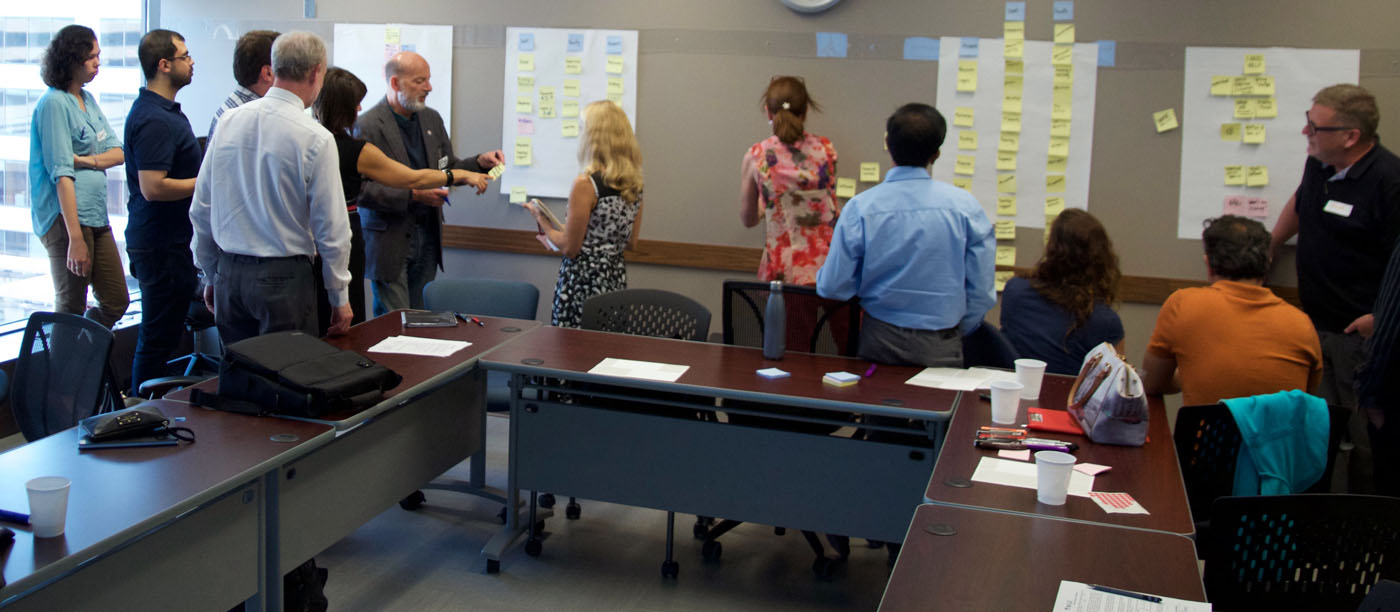It's time to redesign or revamp your site, but where do you start and what steps should you follow?
Creating and following an informed and organized plan will help your redesign project run smoothly and should result in a better, more robust website.
Step 1: Get focused by creating a website profile
Why do you need to take this step?: Your department has agreed that a redesign is needed (and possibly long-overdue) but are you sure all your stakeholders and team members are on the same page with the expected outcomes?
What to do: Start your project be creating a project brief (Excel document) that defines your project goals and objectives.
Download the project brief template (Excel document)

Step 2: Get informed by gathering audience feedback and reviewing your current site
Why do you need to take this step?: You may have had discussions with your team about why your website needs to be redesigned, but have you also talked with your audience?
Are your visitors able to find the information they are looking for when they come to your site? Are they able to do what they need to do when they visit you online?
What to do: When assessing your visitors' needs, it's always a good idea to go to the source and speak with your audience. Analyzing the state of your current site and how it is being used will also help you identify concerns that should be addressed.
Here are some resource links to help you check this item off your to-do list:
- Check out our UX toolkit to access resources for improving user experience
- Take our UX at McGill training course - WS 103
- Learn how to create a survey using Forms in Office 365 or WMS webforms
- Learn how to perform a content audit
- Download a content audit template (Excel spreadsheet)
Review your site's Google Analytics reports

Step 3: Get organized by documenting your game plan
Why you need to take this step: You've defined your goals and objectives, and have a good understanding of user requirements. As a next step, we recommend you outline the specific updates you plan to implement in response.
This outline will help you identify and prioritize tasks, and will also provide a record of the changes you're making for future reference.
What to do: You can use this handy review template (Excel document) to create your outline.
If you feel inclined, you might also create a project plan, or build wireframes, mockups and/or prototypes. These documents are helpful for planning and reviewing updates with stakeholders and can also be useful for conducting audience testing.
Step 4: Getting the job done!
Once you have your tasks laid out before you, you're ready to get to work!
Here are a few additional resources and how-to links that you might find helpful:
- Request a WMS site / staging site
- Articles about website best practices
- Index of documentation for the McGill Web Management System
- Report an issue / Ask a question about the Web Management System
- Web Services training and drop-in labs
- Request for WMS site to go live
Bonus section: Staging site best practices
When your staging site is created, you'll actually have two "active" versions of your site - your live site which is accessible to the public and your staging site where you will implement your updates. There are some important things to keep in mind when it comes to managing these two environments simultaneously:
- It is strongly recommended that you refrain from updating your live site after your staging site is created. However, if you absolutely need to make updates, you should make sure that any changes made to your live site are also made on the staging site (except where channels content is concerned, see below).
- If you create channels news or events on your live site while your site is in staging, you'll need to contact the Web Services Group via the IT Service Desk to request a re-import of your channels items when your staging site goes live.
- When adding links to pages within the site, be careful to use relative links instead of absolute links. Absolute links pointing to staging.mcgill.ca will break when the site goes live. For more info, see the IT Knowledge Base article, Links in the WMS (Knowledge Base article for migrated site).
- It's best to complete your revisions and launch in as short a time as possible. Keeping a site in staging for an extended period of time increases the possibility that your site content will become out of sync on your staging and live sites, meaning a greater chance that your redesigned site could launch with outdated content.
We wish you all the best with your project! As always, please don't hesitate to reach out to us if there's something we can help with.
Looking forward to seeing your redesigned website!






